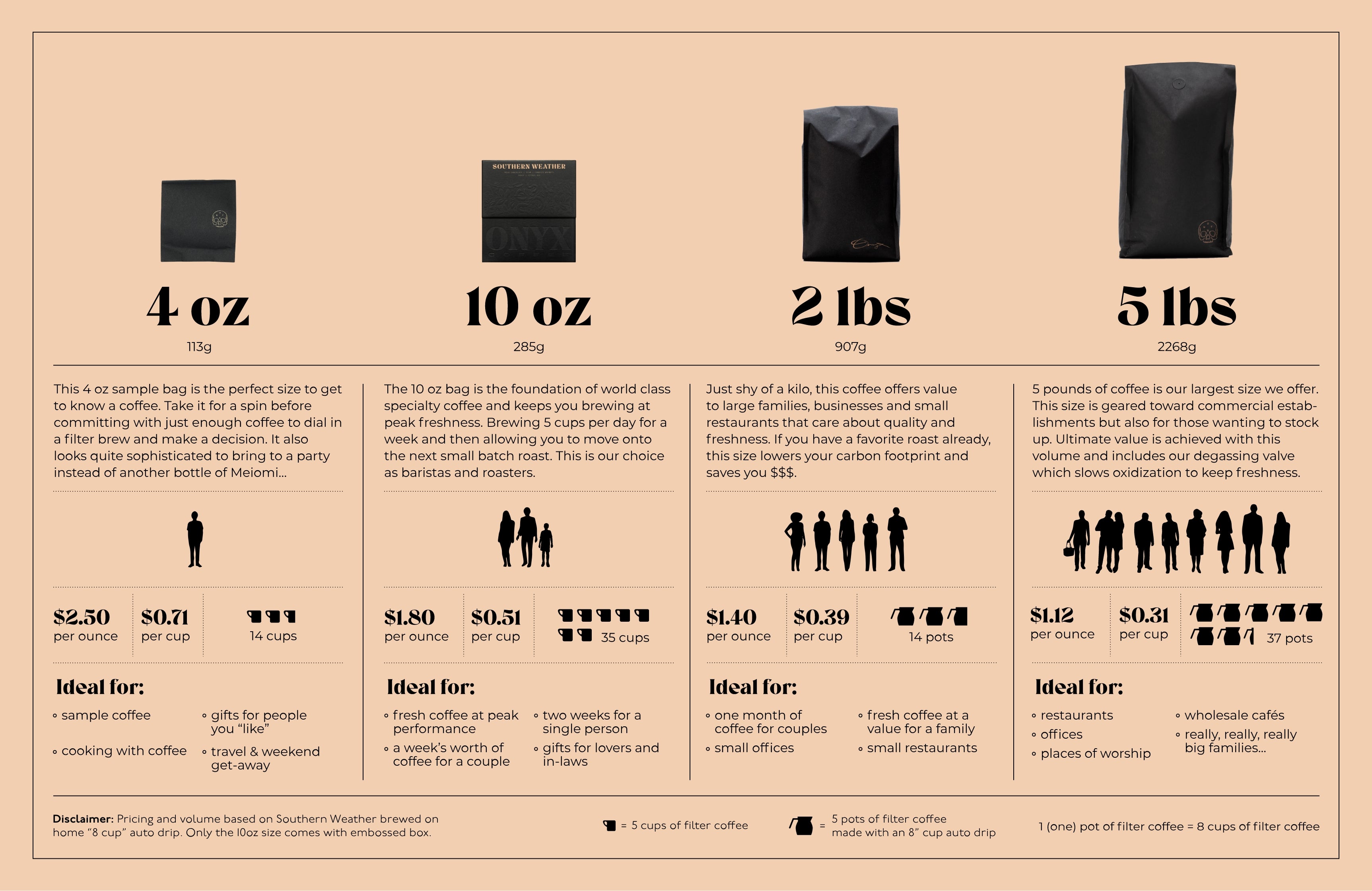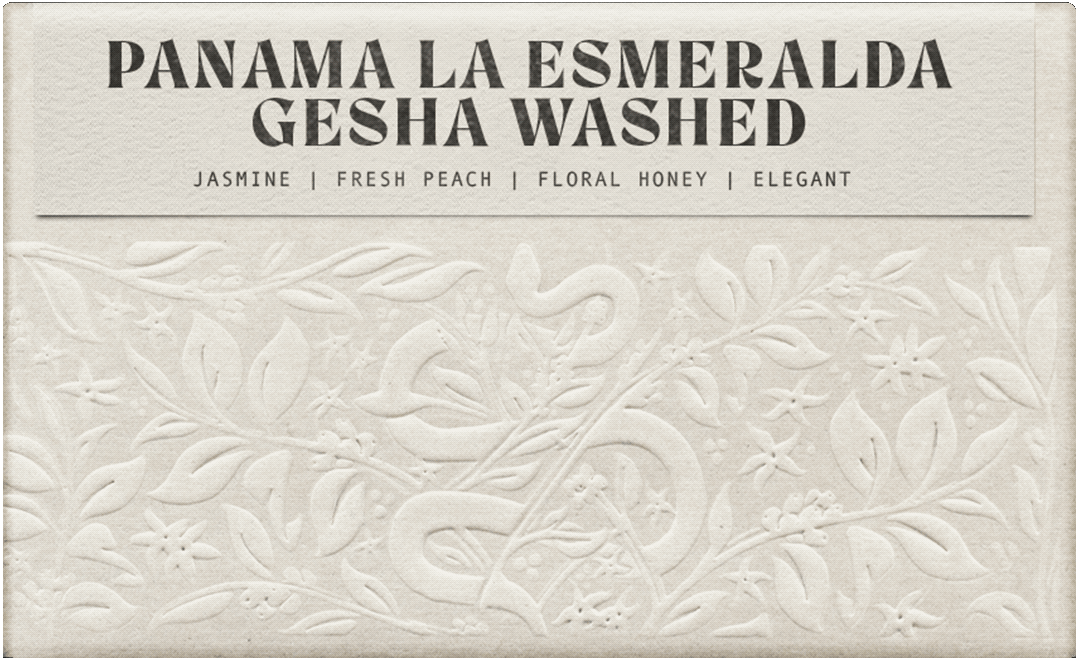Story
The origin of coffee varieties and how they travel is always steeped in legend, and the story of Gesha is no different. It is clear that the variety began in Ethiopia, and was counted and harvested under the order of the Director of Agriculture in Kenya. Gesha traveled to Tanzania, then to CATIE in Costa Rica. This variety made its way to a farm in Palmira, Panama, in the 1960s, where it was mixed with other varieties. The plot of land was owned by Rudolph A. Peterson, a Californian banker who was preparing to retire to Panama. Rudolph Peterson was pulled away by other responsibilities, and the management of the farms eventually fell into the hands of Price Peterson. At the time, Hacienda La Esmeralda was predominantly a dairy farm, but in the mid-’80s, the farm was diversified to include coffee, which had a rich history in Boquete, Panama.
In the 1990s, a wave of coffee rust was ravaging farms in Panama, but Daniel Peterson noticed that the Gesha trees were not affected as severely by the fungus. They decided to plant more of the farm in this tree to prevent rust. And they planted Gesha across the farm, higher on the mountain than Gesha had ever been planted before. Innovation and progression are typically slow to happen in coffee production, but 2004's Best of Panama auction changed the next decade of high-end coffee production. While preparing for the competition, the Petersons separated the lots they were processing for the first time. The cuppers discovered that the high elevation lots from Jaramillo were floral and deeply complex, reminiscent of Geshas Ethiopian origin. This lot was submitted to the 2004 Best of Panama, and the legend of Gesha was ushered frontstage.
Following their spectacular rise to fame, the Petersons narrowed their focus to the continued development of their infrastructure and innovation in processing and lot separation. After getting the attention of the coffee world at large, they began producing natural process Geshas, which is standard practice now, but at the time was borderline scandalous. Shortly after winning 2004 Best of Panama, they launched the Esmeralda Special Auction, a private auction held yearly, featuring the top lots from the farms. Although they still participate in the Best of Panama, this new auction system has allowed them to feature more lots than the few that are submitted to BoP. Hacienda La Esmeralda was one of the first to hold a private auction, banking on confidence in their skills as producers, and their reputation for excellence. This internal auction model empowers the people that produce the lots to be paid a high price for all the work they’ve done, which in turn promotes innovation to seek higher quality the next season. Since the first Gesha lot was cupped in 2004, they’ve focused on producing the highest quality possible from their three farms. This focus continues today as their coffees continue to win awards in the Best of Panama, as well as fetching some of the highest prices paid for coffee in the world. The Petersons were instrumental in making the legendary variety from Ethiopia famous, even prompting a book to be written about them. Geshas from Hacienda La Esmeralda command a reverence on the cupping table by name, but will pull you in with their florals and their depth of sweetness…
WASHED PROCESSED COFFEES
Processing in coffee refers to the conversion of the raw coffee cherry into green coffee, a finished product for roasters to manipulate. Washed coffee can also be known as “wet-processed.” It refers to the removal of the fruit that covers the beans (seeds) before they are laid to dry. To do this, coffee cherries are then squeezed through a screen called a pulper. The fruit/skin travels down one shoot, while the coffee beans go into a large tank. The seeds at this point still are covered in a sticky, mucilage-like substance, think the stringy fruit left on a peach pit. From here, the coffee goes through a 24-hour fermentation. This step is a delicate time in processing where bacteria are eating and converting the mucilage and changing the flavor of the coffee. If this fermentation happens for too long and the coffee becomes vinegary, too little, and you end up drying coffee with mucilage semi-intact. The coffee is washed several times to remove any remaining mucilage that is left.
NATURALLY PROCESSED COFFEE
Natural coffees are beautiful... Okay, natural coffees are beautiful when done properly, but can be equally terrible when things go wrong. Natural processing, or dry processing, refers to the act of drying and fermenting coffee inside the cherry. Long before the age of portafilter tattoos and dual-boiler home espresso machines, coffee was picked and dried this way out of convenience. It is, to this day, still the most convenient and economically friendly way to process coffee cherries. (It’s estimated that dry-processing can use up to 90% less water than the washing process.) So why isn’t all coffee processed this way? Well, as coffee made its way across the world, it was commoditized and standardized, just like all other products spread by colonialism, but that’s a whole other story... Adding to the boom of washed processing, the natural process method can be tricky to get right, due to the delicate nature of fermentation and drying. What does all this have to do with the final cup? Well, when you leave the skin and fruit of the coffee cherry on the seed throughout fermentation and drying, that fruit begins to break down, imparting esters that impart delicate florals and big fruit notes into the seed that survive the roasting process. If it’s rushed or handled incorrectly, this fruit rot can lend off-flavors to the coffee, making the final cup dirty or ‘fermenty.’ Basically, that single cherry begins to slowly decay, and controlling that delicate action through advanced technique and metrics allow us, lucky folks, to drink wonderfully floral and fruity coffees. We have long promoted natural processed coffees, and this Panama Esmeralda Gesha is just one of the reasons we do.



